Birds of the family Cardinalidae, which includes 53 different species, are endemic to the Americas and the Caribbean. Buntings, grosbeaks, seedeaters, and tanagers are all members of the cardinal family. But their precise categorization remains a matter of heated discussion, and some have been moved to other families, such as the Emberizidae of the Old World.
Cardinals are non-selective eaters that eat a wide variety of foods, including insects and fruit, nuts, and seed products. The Northern cardinal, one of the most frequent cardinal species, relies almost entirely on seeds, grains, and fruits for its diet.
What Do Cardinals Eat?
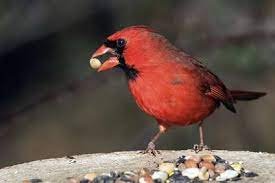
The northern cardinal is the cardinal most commonly meant when the word “cardinal” is used in a slang sense. The northern cardinal, with its brilliant red plumage, is one of 19 recognized subspecies of the species. Males are the only red members of the northern cardinal species, and facial plumage variation is the primary identifier of the many subspecies. Although there is a large genetic diversity among northern cardinals, the many subspecies share a remarkably similar diet.
Cardinals aren’t picky eaters, which is a major factor. Among avian species, their appetites are among the most varied. Most northern cardinals’ diets, which are omnivorous, are composed of about 70% plant matter and 30% animal matter. The cardinal eats a wide variety of insects, including those that are too large to be eaten by most other birds. This can include everything from beetles and butterflies to crickets and flies, depending on the environment. They eat worms and centipedes, among other things. This omnivore gets the majority of its calories from nuts, seeds, and grain, but it isn’t choosy.
Cardinal Diet and Food Sources
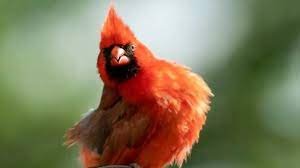
Cardinals are almost considered to be omnivorous birds. The vast majority of their diet is acquired from natural sources. Have you ever wondered what they eat? In this section, we will talk about the fundamentals of a healthy diet and the main food groups.
Also, know Raising Goldfish Fry: Complete Care Guide
Seeds
Cardinals are known to scavenge for seeds on the ground and in the shade of low-growing plants. Their powerful beaks can easily open the shells, and they devour the meat straight out of the shell. Unlike finches and house sparrows, they aren’t finicky eaters. This explains why, in the wild, they eat so many different kinds of seeds.
Common seed fare for these creatures includes:
- Pumpkin Seeds (Especially Black Oil Sunflower Seeds)
- Oil-Rich Safflower Seeds
- The Seeds of the Squash
- Shelled pumpkin seeds
- Sugar Maple Seeds from a Boxelder Tree
- Grain of Watermelon
- Seeds from Ragweed
Nuts
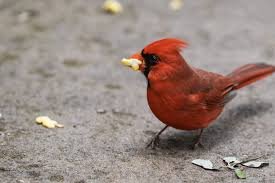
Cardinals, like many other birds, are bananas for peanuts in particular. The rich fat and protein content of these tasty almonds ensures that these songbirds will be full for an extended period of time. You may attract cardinals to your yard by putting out the following nuts.
- Roasted Peanuts
- Ground-Up Peanuts
- Walnuts
- Almonds
- Cashews
When offering nuts to cardinals, always be sure to supply unsalted varieties. The high sodium content of salted nuts is toxic to cardinals.
Insects
Cardinals have a wide range of insect preferences. Thus, they aid farmers and do-it-yourself gardeners by consuming bugs that would otherwise cause damage. Numerous insects frequently visit cardinals. This means that the songbirds don’t have to go looking for them. Cardinals typically consume the following insects:
- Ants
- Beetles
- Caterpillars
- Cicadas
- Crickets
- Centipedes
- Katydids
- Locusts
- Moths
- Lice in plants
- Spittlebugs
- Snails
- Spiders
- Termites
Mealworms
Mealworms are highly regarded by cardinals as nutritious and delicious snacks. In the spring, parent cardinals look for live mealworms to feed their young. Live mealworms are best if you can offer them with them, but dried mealworms will do in a pinch.
What Methods Do Cardinals Use to Find Prey?
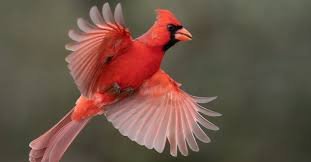
The cardinal is an omnivore that chooses its foods carefully when it can but is flexible when it must. Cardinals spend the majority of the year in monogamous pair-bonds, with the male taking on the role of primary provider for the female and young. The birds use their hooked beaks to scavenge for food on the ground, picking up seeds, sprouts, insects, and even small animals. Cardinals love seeds that are high in fat and protein and are also easy to shell. Sometimes, while in flight, cardinals may use their beaks to catch insects from the air.
During the height of the breeding season, their diet shifts to include more insect and invertebrate prey, while young birds, who require a higher protein intake to develop properly, eat primarily meat.
A large portion of a cardinal’s diet consists of plants grown in human gardens because their ranges frequently overlap with those of suburban communities. Garden-area territorial disputes can get intense, so many people now feed cardinals to keep them out of their gardens. Cardinals love safflower seeds, but other birds tend to ignore them in favor of more popular varieties of bird seed. Although birds have been seen eating fruits from gardens, their interaction with humans is generally beneficial. Seeds and fruit benefit from their incessant eating habits, and they serve a crucial role in controlling pest and invertebrate populations.
What do baby cardinals eat?
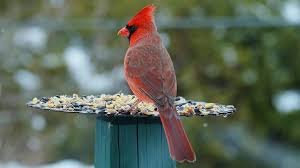
Cardinal chicks receive a high-protein diet of regurgitated food and soft invertebrates like larvae, worms, and caterpillars. Baby cardinals (and other baby birds) need protein and fat to quickly gain weight, and nice and soft insects reap the same benefits.
Most of the young will have their first few meals regurgitated into their mouths by their mothers. As soon as the chicks are able to chew on them, they will be exposed to seeds and other plant stuff. For up to two months after leaving the nest, parents will continue to feed their young cardinals.
Are cardinals omnivores?
All cardinal species are omnivores despite the fact that certain species have a preference for plant foods and others for insects.
Although members of the same family may have very different diet preferences, cardinals as a whole are able to eat a wide variety of foods and aren’t afraid to try new things if they’re hungry enough.





